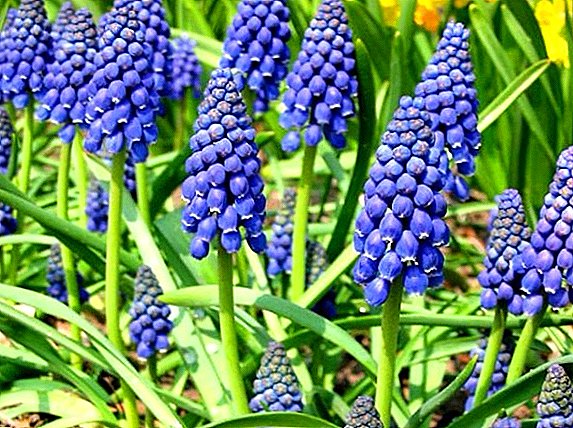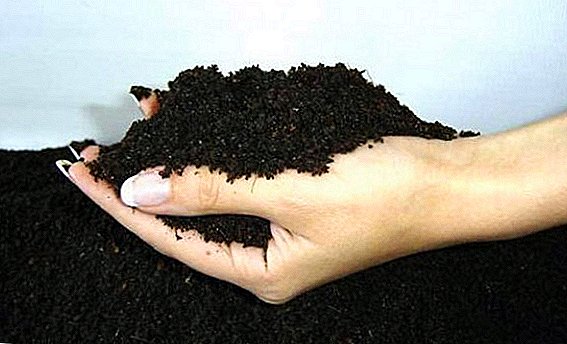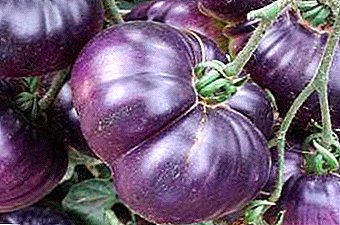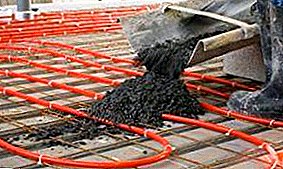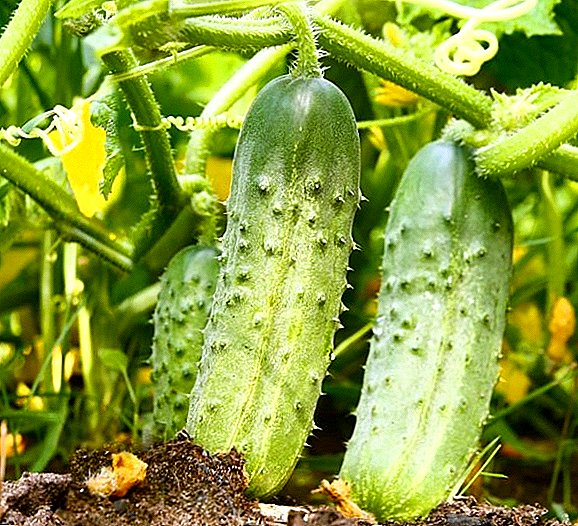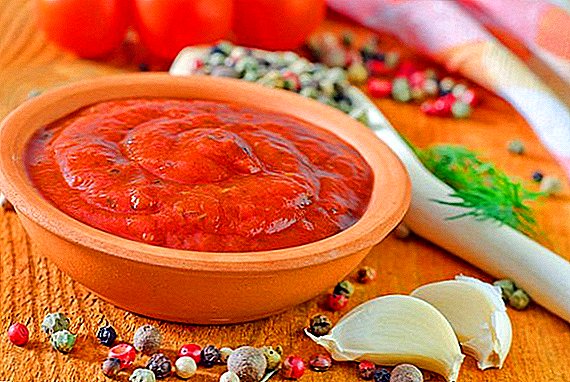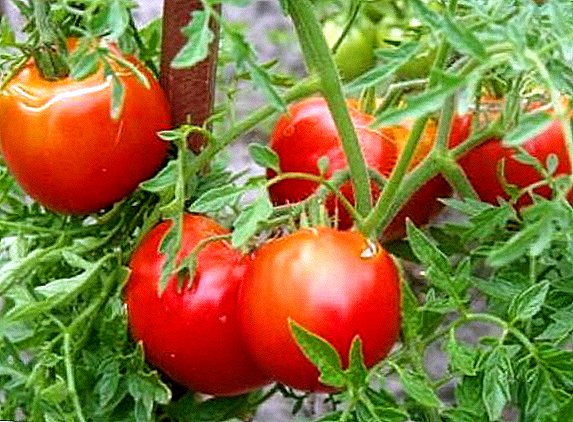 Even if you are accustomed to the same varieties of tomatoes on your site, this is not a reason to deny yourself the pleasure of growing new varieties of tasty and juicy tomatoes. It is likely that the new "inhabitants" of your site will be able to surprise you with the best taste characteristics and ease of care. And it is quite possible that this will be the variety "Carrot".
Even if you are accustomed to the same varieties of tomatoes on your site, this is not a reason to deny yourself the pleasure of growing new varieties of tasty and juicy tomatoes. It is likely that the new "inhabitants" of your site will be able to surprise you with the best taste characteristics and ease of care. And it is quite possible that this will be the variety "Carrot".
Botanical description
Tomatoes varieties "Carrot" - stunted and hardy, they will feel great both in greenhouse conditions and in open soil. The plant has a distinctive, easily recognizable appearance, and its fruits have a good taste.
Did you know? Due to the presence in its composition of a large amount of serotonin (known as the "hormone of happiness"), tomatoes are able to raise their spirits and fight depression.
Bushes
The height of the "carrot" bushes is 80-90 cm, but if you fertilize the soil very well, then it is possible to increase this value by several centimeters. At external examination, the highly dissected leafy plates become immediately noticeable, because of the type of which this variety of tomatoes got its name (the leaves really look like carrots tops). In each brush 6-7 tomatoes are formed.

Fruit
All tomatoes ripened on bushes have an orange-red color and are characterized by a flat-rounded shape. When palpating it is easy to notice a weak ribbing, and if you cut the fruits, you can see the multi-chamber structure of their inner part. Each tomato weighs about 100-150 g and has good taste: the flesh has a standard tomato flavor, but it tastes more sweet and juicy.
Did you know? Just one glass of "tomato blood" contains half the daily norm of provitamin A and vitamin C, which are important for the body, and help strengthen its defenses.
Vintage varieties "Carrot" is perfect for fresh consumption, and for further preparation of blanks for the winter.

Characteristics of a variety
The variety of tomatoes "Carrot" produces fruits within 95-100 days after the first shoots, and if you can organize good conditions for the growth and development of the bushes, then from one bush you will be able to harvest up to 6 kg of crop (in unfavorable growing conditions, this figure is lower than 4 kg). Standard "tomato" diseases, in particular, rot and phytophthora, in most cases bypass these tomatoes by the side, for which the plant is valued by gardeners.
Learn how to grow tomato varieties such as: Sugar Pudovik, Cardinal, Golden Domes, Mikado Pink, Bokel F1, Masha Doll F1, Gulliver F1, Monomakh Hat ".
Tomato "Carrot": advantages and disadvantages
If you carefully review the characteristics of the variety, then the merits of the Carrot are obvious. First of all, it is early ripeness, good taste of fruits, consistently high yields and resistance to basic tomato diseases, which often destroy a significant part of the tomato crop. As for the shortcomings, they are really hard to detect, and if there are cases of low yields or poor plant growth, most often this is the result of improper care.

Where to grow "carrot"
Grade "Carrot" is designed for growing in shelter (greenhouse or film constructions) and in the conditions of open ground where after arrival of steady heat transplant seedlings from boxes. Among the regions of cultivation of "carrot" tomatoes can be distinguished Ukraine, Russia and Moldova, in other countries they are not so common.
Also, for cultivation in greenhouse conditions, suitable varieties of tomatoes such as: "Sugar bison", "Grandee", "Raspberry giant", "Honey drop", "Cosmonaut Volkov", "White filling", "Newbie", "Marina Grove "," Persimmon "
The best predecessors
When choosing a plot for planting a variety, in addition to lighting and temperature conditions, it is important to take into account the types of progenitor plants growing here before tomatoes.

The best of them in this case are such cultures: carrot, zucchini, dill, parsley, cauliflower, cucumbers.
Important! Try not to use the same area for planting two years in a row, even if you change their variety.
How to plant tomato "Carrot"
Tomatoes varieties "Carrot" are grown in the same rassadnym way like most others. It is important to observe the terms and rules of sowing and transplanting seedlings, as well as to pay due attention to the optimal pattern of planting grown plants in the area.
Terms and conditions for landing
Sow "carrot" seeds for seedlings are advised for 50 days before transplanting them to an open area, that is, around March or early April. The seedlings are picked after the first true leaf appears, and transplantation to a permanent growing place takes place in the middle of May or early June.

If you have a heated greenhouse, then you can sow tomatoes directly in the beds (in April), and in the presence of film shelters, sowing is done in May (in which part of the month you need to decide individually, based on your climatic region and temperature conditions). These time values should be observed if you want to get a rich harvest in clearly defined terms.
Important! When growing seedlings at home, 7-10 days before the intended movement into the open ground, seedlings need to begin to harden, gradually bringing the boxes to the balcony.
Tomato planting scheme
Seeds are sown in nutrient and loosened substrate, closing up to a depth of 1-1.5 cm. After sprouting densely inoculated plants, we can weed so that 2-3 cm of free space remains between neighbors (if you do not sow the seeds in separate boxes). For all the time of growth and development, tomatoes can be fed 2-3 times with complex fertilizers.

When transplanting to a permanent growing place, tomatoes of the "Carrot" variety should be placed according to the 50 x 40 cm scheme, not planting more than 7-9 plants per 1 m².
We advise you to read about how to collect tomato seeds for planting yourself, how to prepare the soil for growing seedlings, how to choose the optimal time for planting tomato seedlings and when to properly dive tomatoes after germination.
Features of cultivation and proper care
Any tomatoes will feel good on the areas rich in organic matter, therefore when preparing the beds for planting it is necessary to apply appropriate fertilizer to the soil.
Calculation of fertilizers per 1 m²:

- 10 kg of organic matter;
- 20 g each of potash and phosphorus (they are buried in the ground in autumn);
- 10 g of nitrogen-containing compounds.
As a fertilizer for tomatoes, they also use siderats, namely: white mustard, vetch, phacelia, alfalfa, lupine, rye, buckwheat, goatling, oats.
Watering and loosening the soil in the care of the "carrot" tomatoes, as well as their fertilizer, held throughout the growing season. In addition, tomatoes need moderate pasynkovanii.

In compliance with all agrotechnical requirements and a responsible approach to the selection of seeds, inYou will be able to taste the tasty and large tomatoes of the "Carrot" variety in the most record time, without significant time and labor. A non-standard type of bushes will allow you to stand out among the owners of garden plots in the neighborhood.


